Dear Steemians
One of the most famous volcanos in the world is the Ijen on Java. It's famos because of the blue fire inside the crater. In only two volcanos in the world you can see that.
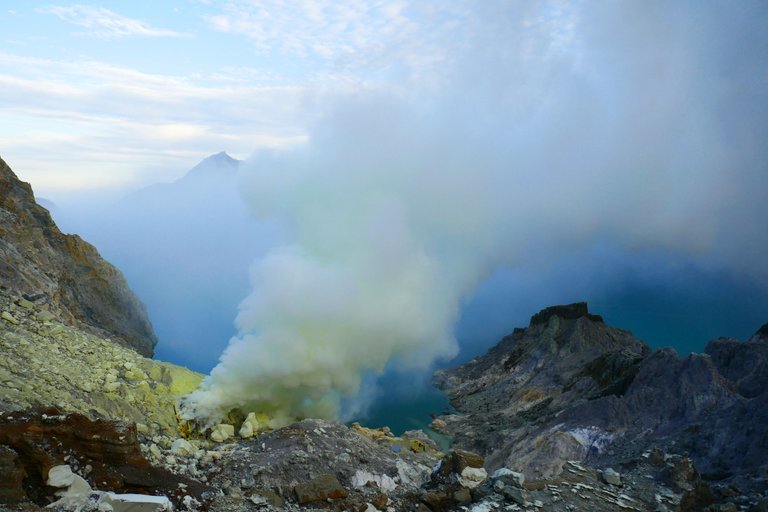
So we decided to go and see the blue fore while we stay on bali.
We organised a guide on Facebook to go from Ubud to the Ijen and back.
We were leaving Ubud am 10 am and drove to the ferry to Java.
We had a room in a Homestay for the night to sleep until we start the trip at 12pm.
After eating and buying some food for the morning we go sleep for maybe 3 hours.
At 12 pm we drove with the car for one hour to the startpoint.
There it was already really cold and we drunk a hot tea before starting.
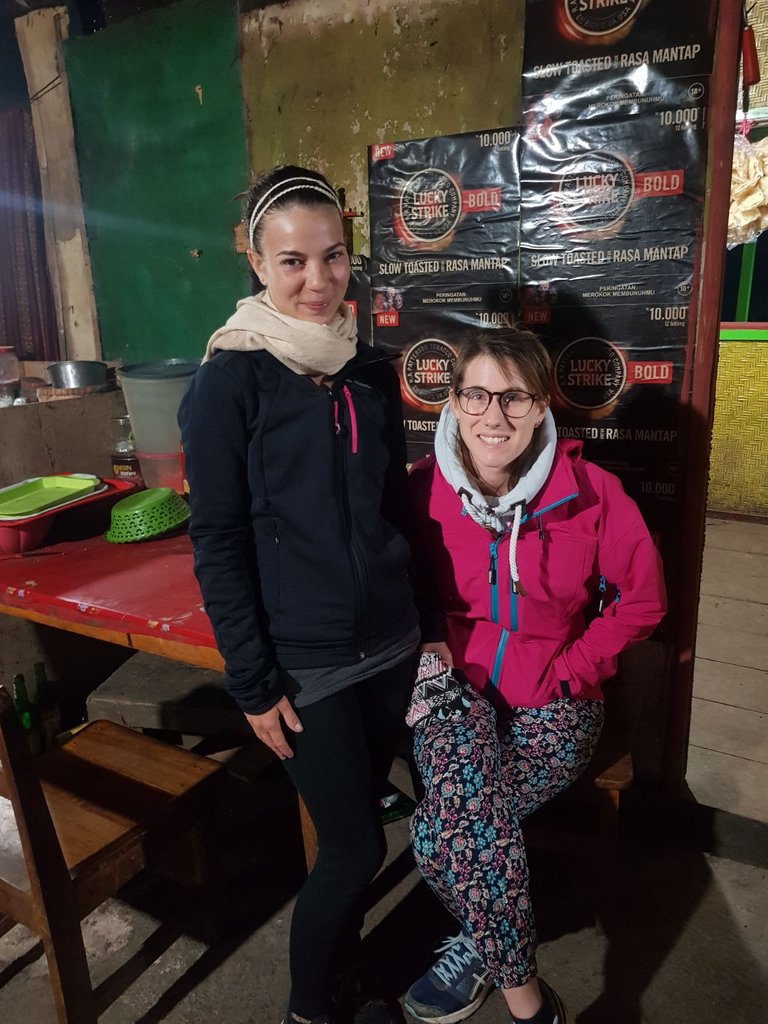
At 2 am we started walking. The walk is about 3 km in 1.5 to 2 hours. The first kilometer was easy and only a little bit up. The second kilometer was really hard because the way was strait up. The last kilometer was not so hard. Then we arrived the top of the volcano.
Then we had to go down to the crater to see the blue fire. So another 300 meters down.
On the way we saw a lot of the miners.

To be a sulfor miner is the hardest job in the world. The gas from the sulfor is toxic and a lot of the miners don't have masks so they will die early.
They start working at 10pm, go up the volcano, get the sulfor and take about 70 to more than 100 kg on their back up to the top. They do this all twice and finish working at 5 pm and sleep every day only 3 to 4 hours.
Most of them will do it the hole life, so from 20 until 70.
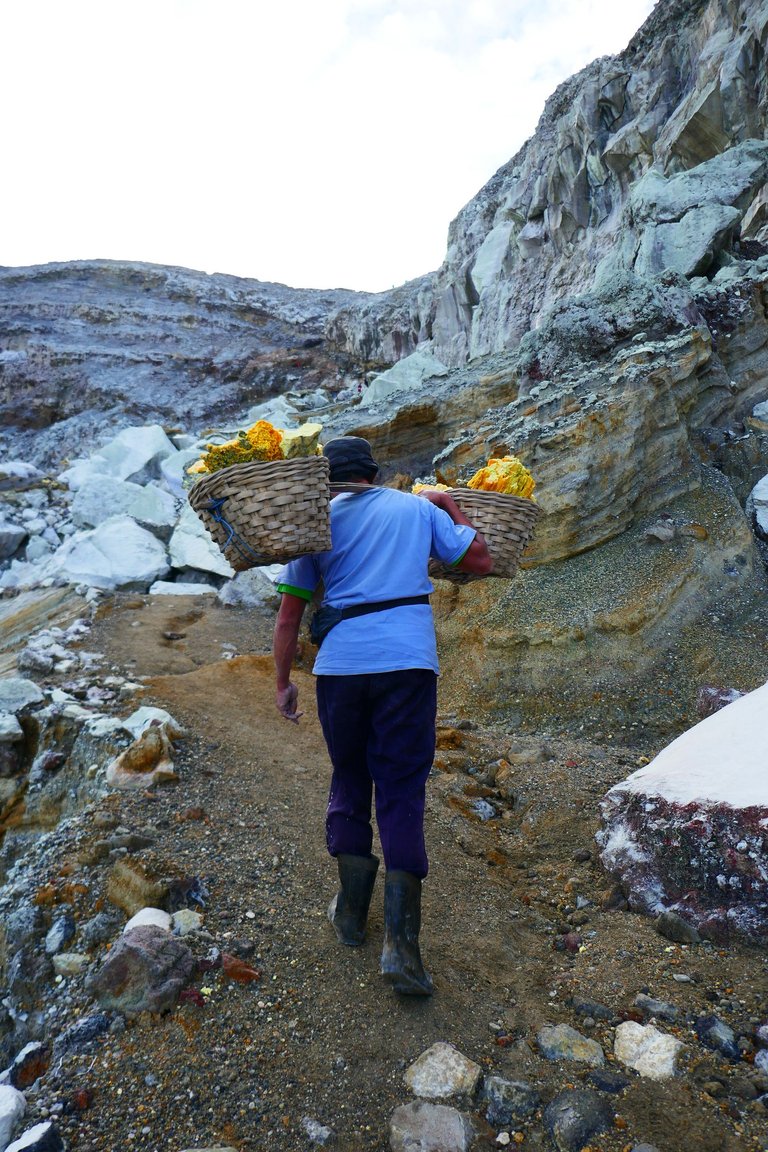
When we went to the crater we have to wear a gasmask, incase the smoke is coming to us.
Already on the way down to the crater you can smell the sulfor and it's smells really bad.
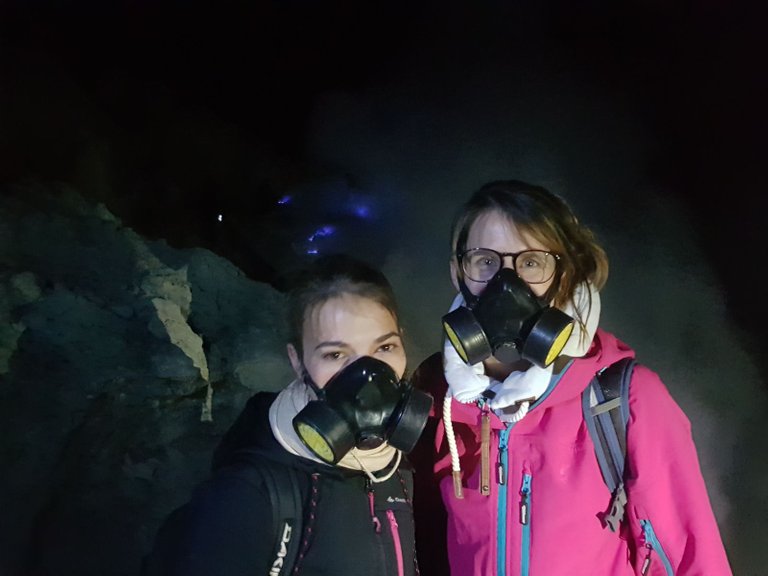
And then we really can see the blue fire and it was just amazing
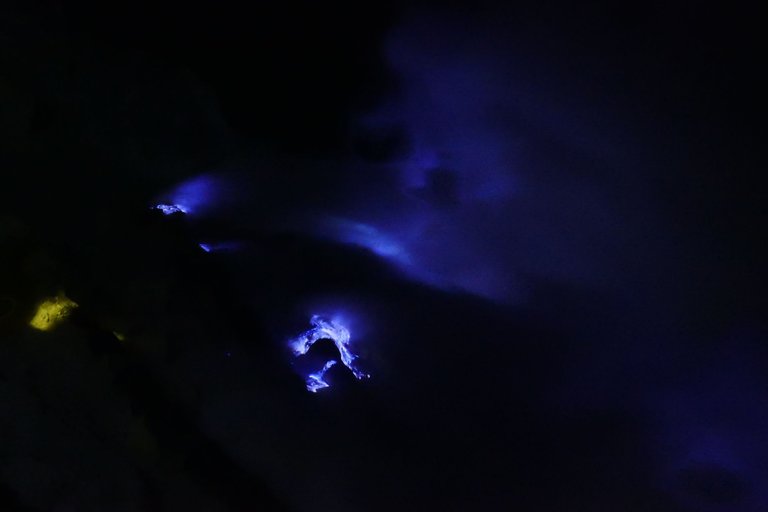
We stayd there a long time and taking pictures.
After that, when all the people went up to see the sunrise, we stayd there and saw how the miners worked. The work they do every day is just crazy and you have to be really brave and strong to do this job.
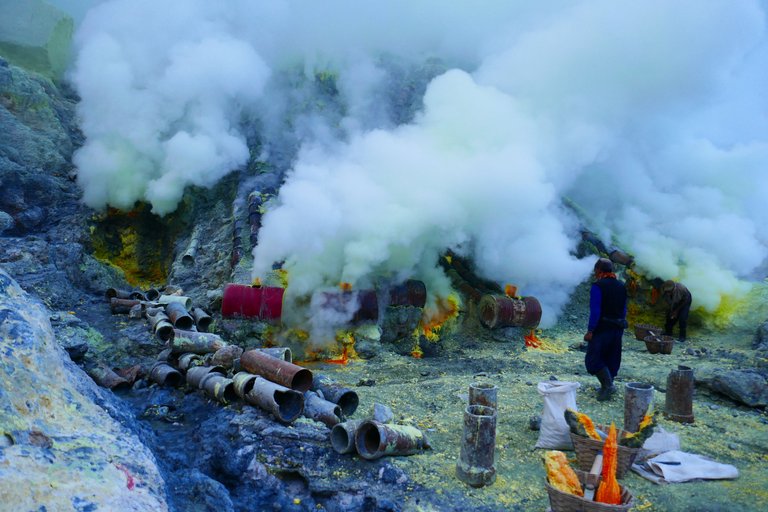
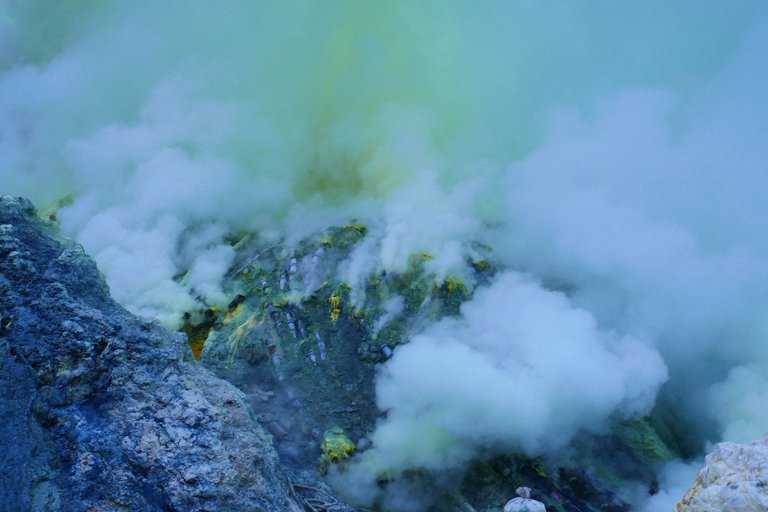
After going back the same way it was about 7.30 am and we were so tired. But it was an amazing experience to see the blue fire and the miners.
The miners have all my recognitation!
Liebe Steemians
Einer der bekanntesten Vulkane ist der Ijen auf Java. Er ist vor allem wegen des Blauen Feuers so bekannt, was nur in zwei Vulkanen auf der Welt gesehen werden kann.

Schon vor der Reise haben wir beschlossen, wenn wir auf Bali sind, wollen wir unbedingt zu diesem Vulkan.
Wir haben also einem Guide über Facebook organisiert, da alle Touren sonst extrem teuer waren.
Wir wurden um 10 Uhr in unserem Homestay in Ubud abgeholt und fuhren ca. 4 Stunden zur Fähre um nach Java zu fahren.
In der Nähe des Ijen hatten wir ein Homestay für den Abend, damit wir noch etwas schlafen konnten.
Nach 3 Stunden Schlaf wurden wir um Mitternacht abgeholt und fuhren eine Stunde zum Startpunkt. Es war bereits da extrem kalt und wir mussten uns mit einem Tee aufwärmen.

Um 2 Uhr liefen wir los. Vor uns hatten wir 3 Km in ca. 1.5-2 Stunden. Der erste Kilometer war ganz easy, der zweite war der Härteste und es ging sehr steil hoch. Der letzte Kilomenter war dann wieder ganz einfach. Oben angekommen mussten wir dann aber noch in den Krater runterlaufen um das Blaue Feuer zu sehen, also etwa zusätzliche 300 Meter.
Auf dem Weg runter kamen uns schon die ersten Arbeiter entgegen.

Arbeiten im Ijen ist der wohl härteste Job der Welt. Der Rauch des Sulfat ist giftig und viele Menschen sind schon gestorben. Deshalb sollte man auch nur mit einer Gasmaske in den Krater gehen.

Viele der Arbeiter haben jedoch keine Masken.
Ihr Arbeitstag startet um 10 Uhr abends und endet am nächsten Tag um 5 Uhe abends.
Jeden Tag schlafen sie nur 3 bis 4 Stunden. Und dies jeden Tag während des ganzen Lebens.
Mit 20 Jahren fangen sie an und hören auf mit 70 Jahren.
Sie laufen also hoch in den Krater, bauen da Sulfate ab und tragen zwischen 70 bis über 100 Kg auf dem Rücken hoch aus dem Krater und dann ganz runter. Und das zweimal pro Tag.

Als wir zum Krater liefen mussten unsere Gasmasken bereithalten für den Fall, wenn der Rsuch zu uns kam. Schon beim heruntergehen konnte man die giftigen Gase riechen, und die riechen richtig übel.
Und dann unten angekommen konnten wir tatsächlich das blaue Feuer sehen.

Wir sind eine lange Zeit dort geblieben und Fotos gemacht. Als alle anderen hoch liefen um den Sonnenaufgsng zu sehen, blieben wir noch unten am See und haben den Arbeitern zugesehen.


Der Job den diese Arbeiter jeden Tag machen ist echt unglaublich und man muss schon sehr hart und stark sein dafür.
Um ca. 7.30 Uhr erreichten wir das Ziel, müde aber glücklich.
Die Arbeiter haben meine grösste Hochachtung!
Da hab ich mal ne Doku gesehen der Wahnsinn was die da machen! =)